Heavily impacted by the conditions of World War II, a new movement took rise in Italy, becoming one of the most influential film movements in the history of cinema. The movement was named Italian Neorealist Movement and produced films called Italian Neorealist Films.
BRIEF HISTORY
By the end of the second world war most of Italy was left extensively damaged. The streets were rundown and the communities were in disarray. During the war, Italy’s only film studio too faced colossal damage.
The Italian film industry was in a growing era before the war ended. The films produced during this era showed a vision of Italy and the Italian lifestyle representing mainly the bourgeois society.
These fascist films created an idealistic image of Italy, social hierarchy, and social conservation. Their representation of a righteous and exuberant Italy sharply contrasted with the majority of the masses’ Italy, which was desolate and harsh.
Filmmakers took the end of the fascist regime as an opportunity to capture the Italian reality. The reality of destruction and desperation caused by the war along with the internal anxiety and the external discomfort it had left in the Italians.
“Bicycle Thief is a triumphant discovery of the fundamentals of cinema, and De Sica has openly acknowledged his debt to Chaplin.
– Satyajit Ray
Italian neorealism has inspired prominent directors such as Satyajit Ray and Martin Scorsese. In an interview, Scorsese said the movement is “ the most precious moment in film history” Films made during this era were highly successful by the critics and even won Academy Awards and many others.
BENITO MUSSOLINI
In 1931 the Italian film industry was non-existent. Benito Mussolini, an Italian fascist authoritarian dictator at the time, wanted to revive the industry. While the governments like Russia and Germany saw cinema as a propaganda, Mussolini saw it as a cultural institution.
Mussolini instigated significant projects to bring the Italian film industry back to life. He founded the Venice Film Festival in 1932.
Films have always been an influential media, in 1934, a state-funded and controlled censor board was formed. Their responsibility included editing scripts to match fascist ideologies.
In 1935 due to the growing Italian film industry, the government founded Ente Nazionale Industrie Cinematografiche, or ENIC to support the film industry. By 1938 ENIC had complete authority over importing foreign cinemas, thus becoming the only channel to do so.
Due to this strict censoring, several American films were banned to avoid inciting the Italian audience to rise against their government.
In 1935 Mussolini set up a professional film school. 1937 followed the opening of Italy’s first film studio called ‘Cinecittà Studio’ in Rome, becoming the largest film studio throughout Europe.

Mussolini made significant contributions to the rise of the Italian film industry, and films produced during his incumbency portrayed a vision of Italy he saw fit and promoted ideologies and themes of a civilized and well-established country. These movies were Telefoni Bianchi films.
The world presented in these films wasn’t accessible or empathetic toward the majority of the movie-going public. They found these movies set in an alien world and far away from their reality.
The spring of 1945 in Italy came to be known as The Italian Spring, being liberated from a foreign totalitarian dictator, Adolf Hitler, and Benito Mussolini. The end of these regimes allowed the Italians to revive their natural world.
With the end of Mussolini’s reign, the artists gained creative liberty and used the newfound freedom to clear the disillusionment created by the fascist films.
TELEFONI BIANCHI
Telefoni Bianchi or as translated from the Italian ‘White Telephone’ is a film genre made by the Italian film industry during the 1930s and 1940s. Inspired by American Comedies, these films were melodramatic romances and light-hearted comedies. They depicted an enthusiastic, cheerful, and carefree atmosphere.
The principal element which gave the genre its name was the presence of white telephones in the movies, these telephones symbolized bourgeoisie wealth. The art decor set represented a lifestyle the Italian underclasses couldn’t identify with.

Subjugated by fascist dictatorship, these movies were cleansed of vile social criticisms. They met every criterion that the fascist government considered ideal. Such as being socially conservative, promoting family values, respect for authority, and having a rigid class hierarchy.
Albeit intended to show an Italy being rebuilt, all these characteristics clashed with the war-trodden conditions of the nation.
Their presentation of well-being and progress was far from the Italian reality of the time. They represented a wealthy, emancipated, and educated society while Italy was a substantially poor country, materially and morally backward and with the majority of an illiterate population.
Telefoni Bianchi’s films reinforced traditional family values, subservience to authority, and the holding of the status quo. They had highly bright and luxurious sets. They hired professional actors and dressed them in shiny and plush clothes, and characters often belonged to the higher classes and had a righteous outlook on life.
PROPONENTS OF THE MOVEMENT
Roberto Rossellini
Roberto Rossellini was an Italian director, producer, and screenwriter. Considered one of the fathers of the movement, Rossellini is essentially known for his anti-fascist war trilogy. Even though, released in the black market and produced with credits and loans, Rome, Open City (1945) had an immediate success. The director made the second film titled Paisan (1946), followed by the Germany, Year Zero (1948), completing the trilogy.
Rossellini was known for his close friendship with Vittorio Mussolini (son of Benito Mussolini), yet his vision of Italy remained dark and pessimistic, as visible in his films of the genre. In 1959 he directed a documentary drama India: Matri Bhumi. Rossellini continued to make films and documentaries that influenced filmmakers around the globe until his demise in 1977.
Vittorio De Sica
Vittorio De Sica was an Italian film director and actor. In his lifetime De Sica acted in over 100 films and directed over 30. He even worked as a lead actor in one of Roberto Rossellini’s films. Celebrated as a prominent figure of the Italian Neorealist movement, he is famously known for directing the Academy Award-winning film The Bicycle Thieves (1948). Regardless of the mundane and depressing reality of the poor, his movies had a presence of whimsical humour.
De Sica and Cesare Zavattini met in 1935, and the duo since then collaborated on multiple academy award-winning films. A few of his widely appreciated films are The Children Are Watching Us (1944), Shoeshine (1946), The Bicycle Thieves (1948), Miracle in Milan (1951), and Umberto D. (1952).
” I’ve lost all my money on these films. They are not commercial. But I’m glad to lose it this way. To have a souvenir of my life, pictures like Umberto D. and The Bicycle Thief.”
– Vittorio De Sica
Luchino Visconti
Luchino Visconti began his film-making career as a set dresser and progressed to Assistant Director for French director Jean Renoir before becoming a director and screenwriter. He had flamboyance in his style and made films with greater emphasis on the flaws of human characters and social hierarchy.
Visconti is notably known for Obsession (1943), a film widely considered the first Italian Neorealist film. He wrote the screenplay for the same with his colleagues from Cinema Magazine, Gianni Puccini, Antonio Pietrangeli, and Giuseppe De Santis. Visconti wrote and directed The Earth Will Tremble (1948) before veering to make films in other genres. Visconti also directed multiple stage plays during his later years.
Federico Fellini
Federico Fellini is known for his distinct style and is recognised as one of the most influential filmmakers of all time. Throughout his career, Fellini won 4 Academy Awards, all for Best Foreign Language Film.
Fellini contributed more as a screenwriter to the movement than as a director. He and Rossellini collaborated on Rome, Open City, and Paisan with the screenplay and dialogues. Fellini was also an assistant director for the latter. He is widely known for his films La Strada (1954), Nights of Cabiria (1957), and 8 1/2 (1963), amongst others.
Giuseppe De Santis
Giuseppe De Santis is regarded as one of the idealistic and visionary filmmakers of the Italian Neorealist movement. He was highly influential in Marxism and focused on working-class characters and their sincere attempt to survive hardship.
He met Cesare Zavattini while working as a journalist for Cinema Magazine.
They wrote screenplays focusing on the simple reality of the underclasses. He was credited as a screenwriter for Visconti’s Obsession. He made his directorial debut with Tragic Hunt (1947). His other major contribution to the movement was his film Bitter Rice (1949), also nominated for Best Original Story at the Academy Award.
Carlo Lizzani
Carlo Lizzani was an Italian director, screenwriter, and critic. Lizzani worked as a screenwriter in Rossellini’s Rome, Open City, and De Santis’ Bitter Rice, receiving an Academy Award nomination for Best Original Story for the latter. He also co-directed and wrote the screenplay of De Santis’ Tragic Hunt.
Lizzani went on to make films in a different genre, and during his lifetime he made documentaries on pronounced figures of the movement. He even directed a docudrama Celluloid (1996), the trajectory of which revolves around the hardship faced by Roberto Rossellini during the making of Rome, Open City. Lizzani directed two documentaries on the Neorealist directors; Luchino Visconti (1999) and Cesare Zavattini (2002).
Gianni Puccini
Gianni Puccini was an eminent screenwriter and director, his involvement in the movement was more engaged with screenwriting. He co-wrote Visconti’s Obsession, De Santis’ Tragic Hunt & Bitter Rice, he was also an assistant director in the latter.
Cesare Zavattini
Cesare Zavattini was an Italian screenwriter, one of the first theorists, and a leading exponent of the movement. His views on neorealism emphasised a documentary style of film realism.
Zavattini partnered with De Sica in 1935. Their partnership produced nearly 20 films, including masterpieces like Shoeshine, The bicycle thieves, and Umberto D. These films received multiple Academy Awards nominations, Best Writing- Original Screenplay, adapted Screenplay, and Story, respectively. He also worked with Fellini, Rossellini, Visconti, and other famed directors.
CHARACTERISTICS
Post-war Rome was in ruins, and the Italian film industry was severely destroyed. Since politics was off limits, the filmmakers focused on criticizing Telefoni Bianchi’s films and breaking down Hollywood glamour. They captured what life was like for ordinary people during an important period in history.
Italy was free of its fascist dictator but not of fascism. Filmmakers incited criticism from conservative forces for producing films that showed the harsh aftermath of the war. Acquiring funds and even basic pieces of equipment became a task for them. At times copies of their movies were destroyed.
It was in the solution to these challenges the innovation to film in desolate environments, hiring of non-professional actors, and emphasising the working class or other marginalised members of the society and their reality came in, giving the Italian Neorealist films their distinct characteristics.
NON-PROFESSIONAL ACTORS
The lives of professional actors sharply contrasted with the lives of ordinary and regular people in Italy. These actors, although equally present during the war, did not face the harsh consequences that people belonging to lesser fortunate ranks of society did.
For filmmakers hiring a professional actor meant telling the Italian truth through people who had not faced or lived the lives they would be portraying. Another factor that weighed into this shift was the lack of budget, so the directors started to audition and hire the locals, who understood the gravity of their living conditions better.
These films were born out of a tremendous need, to tell the truth, and were about maintaining a moral position more than a style.
It was unmistakable that the creators were aiming to break down the high standards that Hollywood and Telefoni Bianchi films had established. One of the most powerful examples was the evident visibility of scars and wrinkles in the first-time actors. Roughening up the actor’s looks was not prevalent, while the neorealist directors chose to highlight these imperfections instead of covering them up with makeup.
They believed casting first-time untrained actors would edge out the fluidity and smoothness they would otherwise get from experienced actors.
The working-class people’s performances felt authentic as they shared the grief, trauma, and pain that their characters had. Their faces told a wicked story of surviving war. They suffered from poverty, unemployment, and desperation. These details added great significance and emotions to the films.
Thus to showcase the depth and intensity of the situation in Italy, filmmakers hired the locals to act. Director Vittorio De Sica hired Lamberto Maggiorani, a factory worker by profession, to play the protagonist Ricci for The Bicycle Thieves.
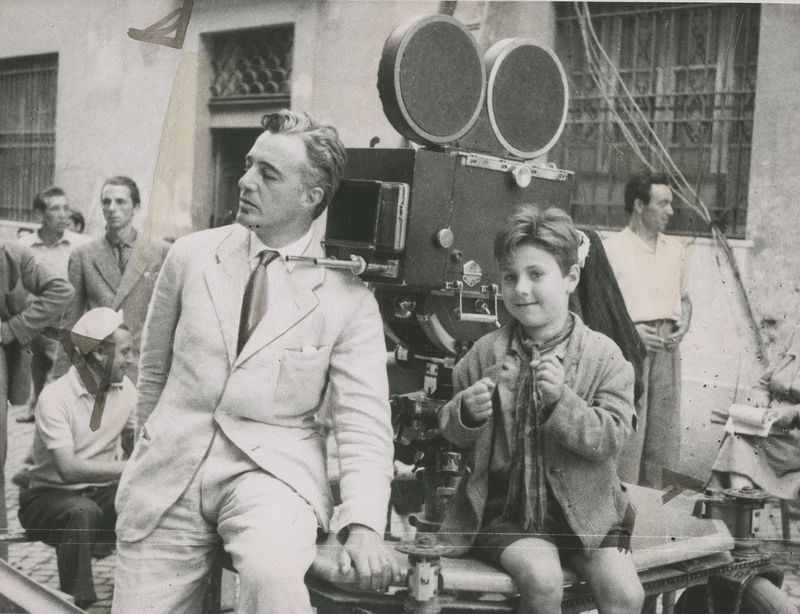
“I think De Sica picked me because I was an ordinary person, ordinary like everything else in the film… My mother had a business, but poverty was all around us, and I represented this poverty”
– Enzo Staiola on being chosen to play Bruno in The Bicycle Thieves
Luchino Visconti in The Earth Trembles hired townspeople of Acitrezza to play his characters. All the actors were either fishermen, bricklayers, labourers, or fish merchants by profession.
However signifying hiring first-time actors was, it was not a rule, and thus not all Neorealist filmmakers strictly adhered to it. Roberto Rossellini hired professional actors for the lead roles in Rome Open City, although for smaller roles he too went with first-time actors.
Even though this need may have taken rise out of budget constraints, giving opportunities to first-time actors became a defining feature of Italian Neorealist films.
SHOOTING ON STREETS
By the end of World War II, Cinecittà Studios was severely damaged but the destruction presented itself as an opportunity for the filmmakers.
Shooting on the war-torn streets of Italy brought down in rubble gave Italy a texture that was absent in Telefoni Bianchi Films. Italian Neorealist films showed Italy as it was, a desolate and bleak country where people belonging to lower social orders didn’t have facilities as basic as water supply available to them.
The films shot in studios lied about the reality of Italy. The Italian Neorealist movement was born out of the need, to tell the truth, and they focused on emphasising it.
While Italian Neorealist Films were shot in natural light and used the existing houses for sets. The films made under Mussolini’s reign showcased a bourgeoisie lifestyle. Their portrayal of Italy was of people satisfied with their lives, sets were well-lit, and art deco sets of luxurious houses. Thus their vision of Italy wasn’t sold as believable fiction to the working-class men.
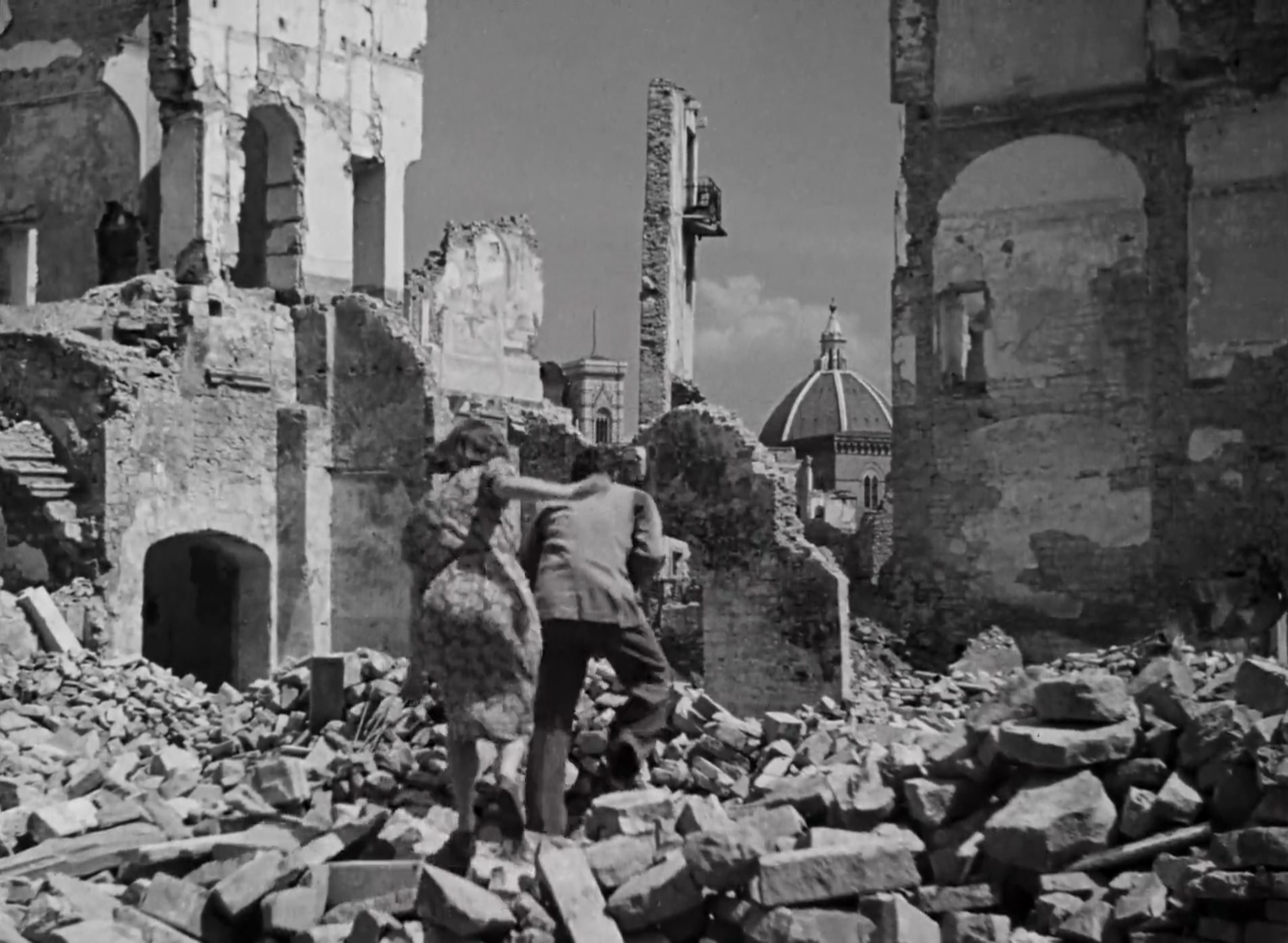
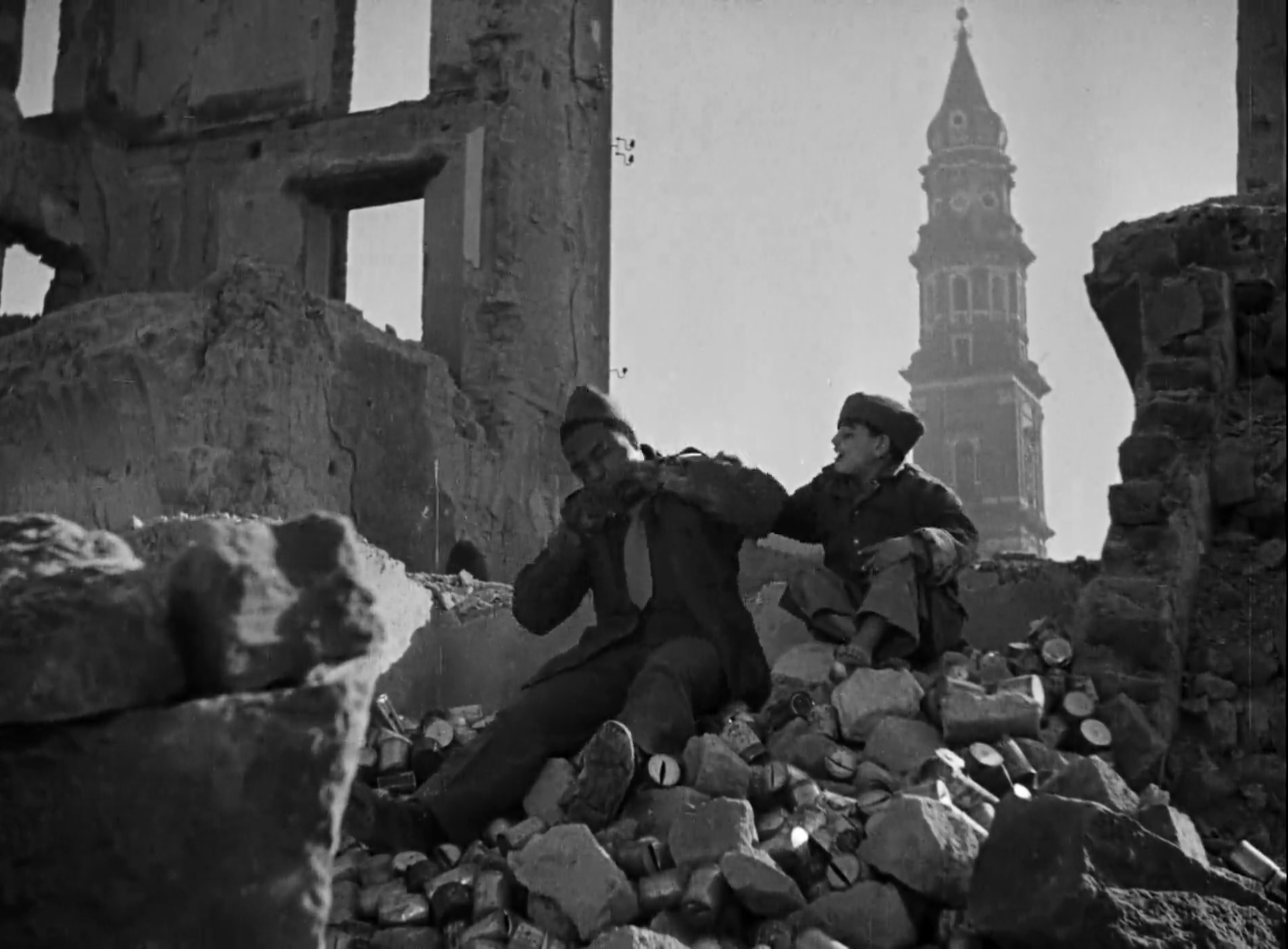
The streets were devised to show the decaying condition of Italy and its people.
Shooting in a natural environment promulgated a poor image of Italy and incited criticism from the conservatives. These films revealed the severe living conditions of the lower classes, the streets occupied with people doing odd jobs, hawkers, people selling illegally imported goods, labourers, and even street performers.
By taking their stories to the streets, filmmakers created a picturesque exploration of Rome. Italian Neorealist films were generally shot in wide shots helping the filmmakers to capture the destruction of the Italian streets.
Filmmakers used travelling as a device to show more of Italy and Italian streets. There is an effortless yet recurring theme of traveling, either from one city to another or within the city. This became a means of communicating the truth with Italy in the background narrating its own story.
The audience is taken on a journey through Italian streets filled with remains and debris of what was left. With the characters walking in the foreground, we see the ruins and wreckage, workers – adults and children, and patched-up houses in the background.
In Roberto Rossellini’s Paisan, a soldier (Joe) discovers an entire community living in houses built inside caves with no source of sunlight. As Bruno and Ricci (The Bicycle Thieves) explore the city in search of the bicycle, we see a vignette of the social hierarchy and inefficacy of the institutions.
The theme of traveling is explored the most in Luchino Visconti’s Obsession, where the unemployed protagonist (Gino) calls himself a drifter. Having no shelter or money, he hitches rides and does odd jobs in exchange for food and lodging.
Devastation, turmoil, and dislocation caused by the war are the foundation of Italian Neorealist films. Telefoni Bianchi’s films were an escapist fair focusing on upper social orders. By shooting on the streets, the filmmakers brought light to the unpleasant and cruel living conditions of marginalised societies.
EMPHASIS ON REALITY
Italian Neorealist films focused on a cynical outlook on life. They portrayed the day-to-day reality of a country traumatised by political upheaval and war. These films were a spotlight on the lives of the poor and desperate and broke down the non-existent glossy world created by Telefoni Bianchi Films.
Filmmakers were not making escapist films but films that explored the crux of humanity and the everyday struggle of people in difficult situations. These stories were not about courageous heroes or glamorous lives of wealthy elites but about ordinary people and their ordinary lives.
The end of the war left the working classes discouraged, and they made desperate attempts to survive. To sustain, the members of the lower social order took drastic measures, extending from seeking assurance from fortune tellers to pawning or selling their belongings or even committing a crime.
The depiction of poverty and desperation varied from filmmaker to filmmaker. Vittorio De Sica uses shape-up (a system of hiring workers and longshoremen by the day or shift by having applicants gather for each day’s selection) in The Bicycle Thieves to convey the shared anxiety among the members of the lower social classes. Establishing the importance of a few days of work for Italians.
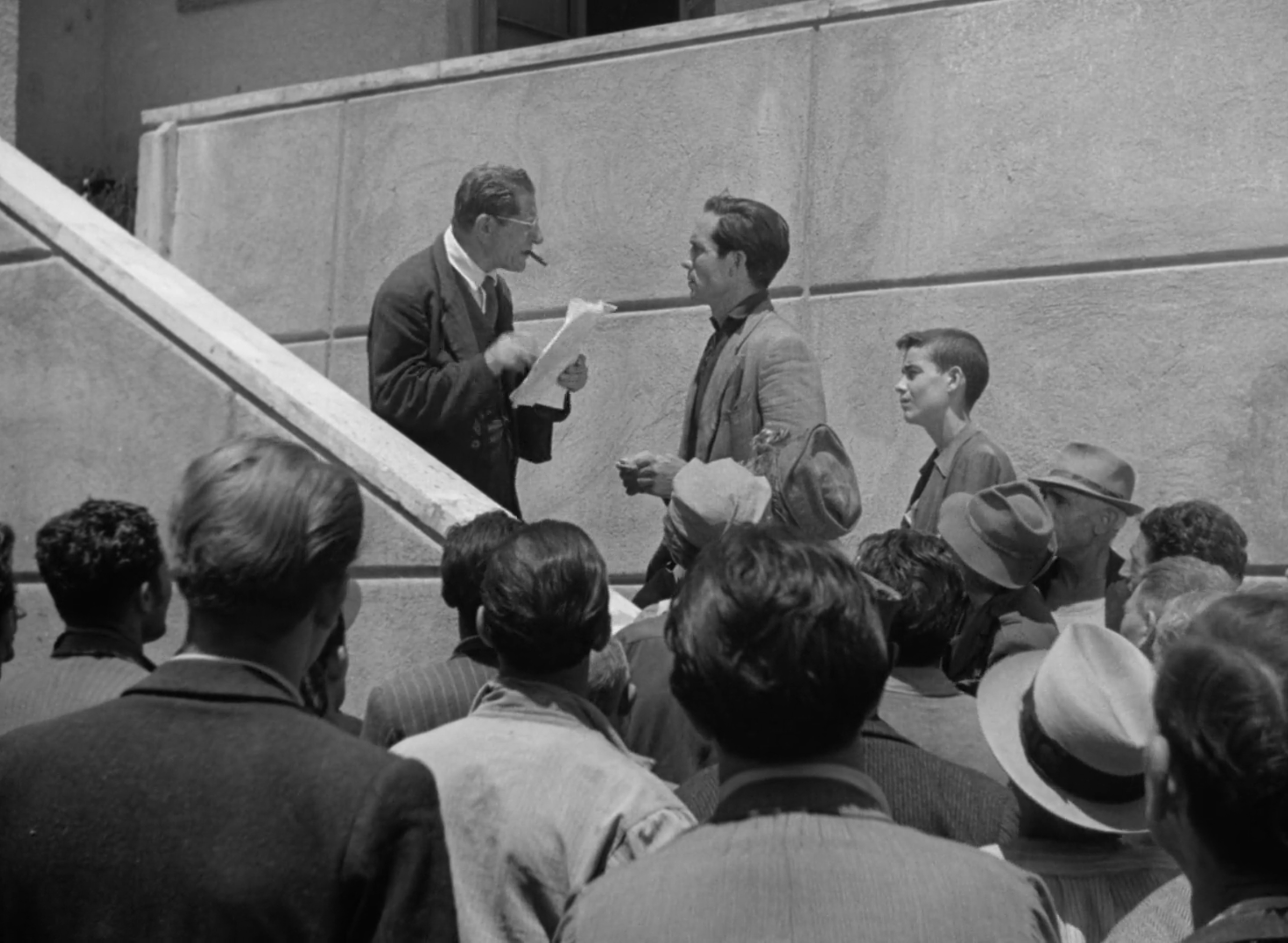
While in Luchino Visconti’s, The Earth Trembles, the protagonist has to sell his house and boat to get out of heavy debt. Characters in these films are always working hard to get a better life. Even after great efforts to change their fate, their miseries do not end.
Most Italian Neorealist films end ambiguously. The ending lacks a sense of hope or optimism that the lives of these characters can change for the better. They are unsatisfying and indicate the sorrowful reality of the marginalised members of society and the mundane lives that they continue to live despite multiple efforts to change.
Their miseries were not limited to unemployment and starvation. Their living conditions were just as uncertain. Forming queues to fetch water and raiding stores for groceries, the general public’s lives lacked basic facilities. Their houses were shattered, and clothes were worn-out and showed signs of being patched up several times.
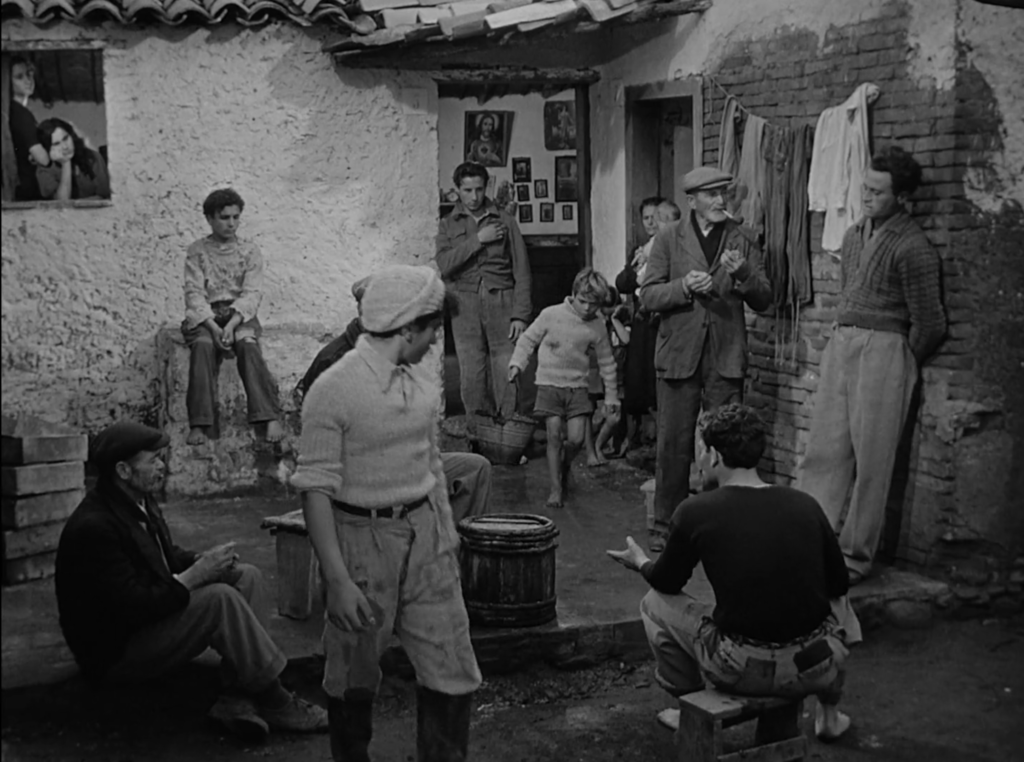
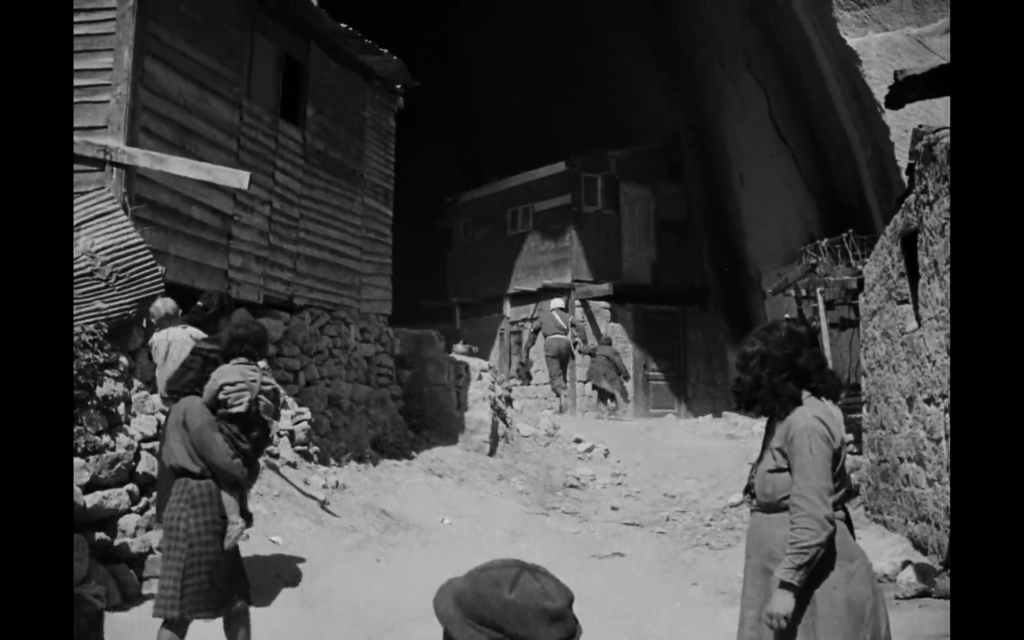
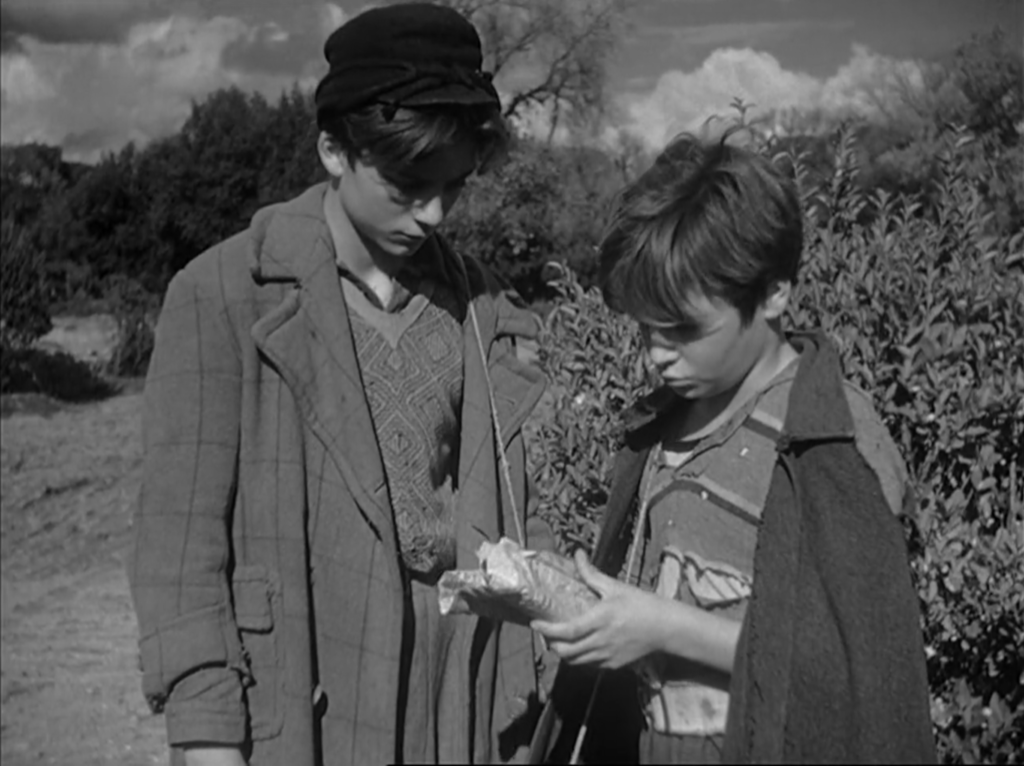
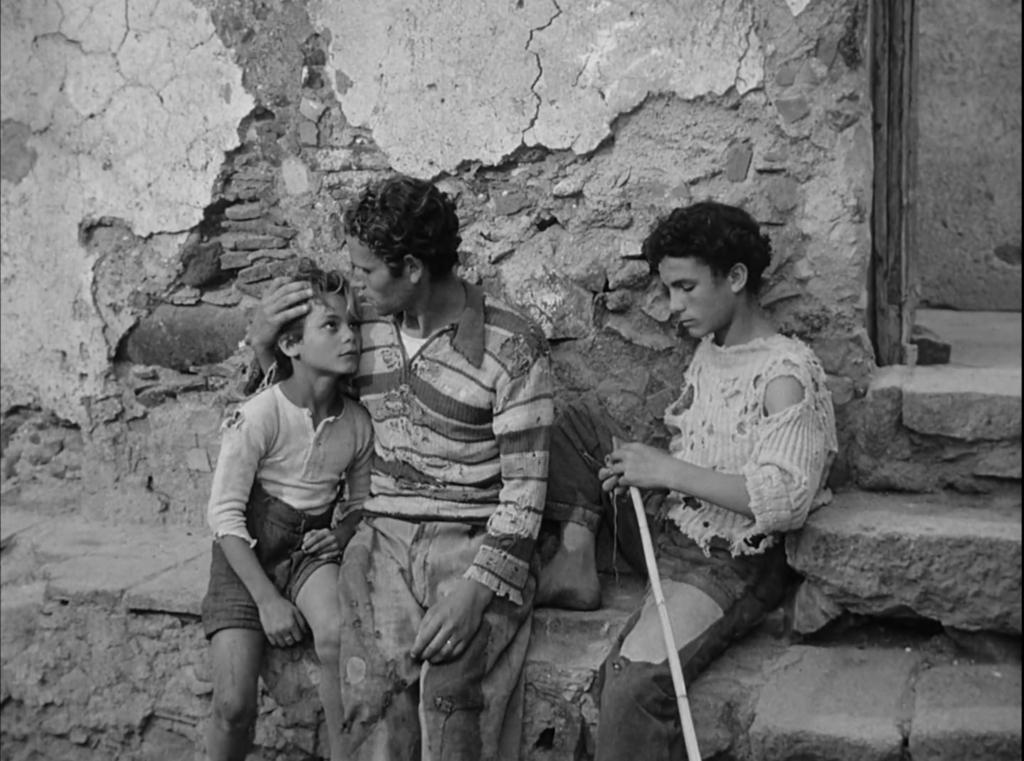
Telefoni Bianchi’s films were based on a devoted and well-settled society, while unemployment increased by 30% and almost every European society was in economic turmoil.
The constant portrayal of decay and dislocation in society offended the conservative forces. The directors faced heavy criticism for the same and continued to make films on life in post-war Italy until the movement dissolved.
EMPHASIS ON MARGINALISED SOCIETY
Films made under Mussolini’s reign presented an idealised image of what life was supposed to be in a fascist state. These films were forbidden from examining any social problems and lacked human truthfulness that reasoned with the audience.
The Neorealist filmmakers focused on working-class dimensions, a section of the society whose struggle Telefoni Bianchi films ignored altogether. They emphasised the stories of working-class people such as fishermen, street performers, unemployed citizens looking for jobs, and drifters.
The characters in Italian Neorealist Films were in constant battle with poverty and the fascist system and were desperately trying to get control of their lives. The underprivileged were overburdened and often found themselves in difficult situations that came down to survival.
The Neorealist directors presented the complex truth which only the poor and the working class shared. These films didn’t only represent a devastated society but the devastated people being exploited and losing control.
In Visconti’s The Earth Trembles, fishermen were exploited by merchants. The fishermen work all night while the merchants benefit from their labor. Ricci’s (The Bicycle Thieves) fate for the next few days depends on his bicycle. Having lost it, he finds himself scavenging through the city of Rome and loses his sanity as time goes by.
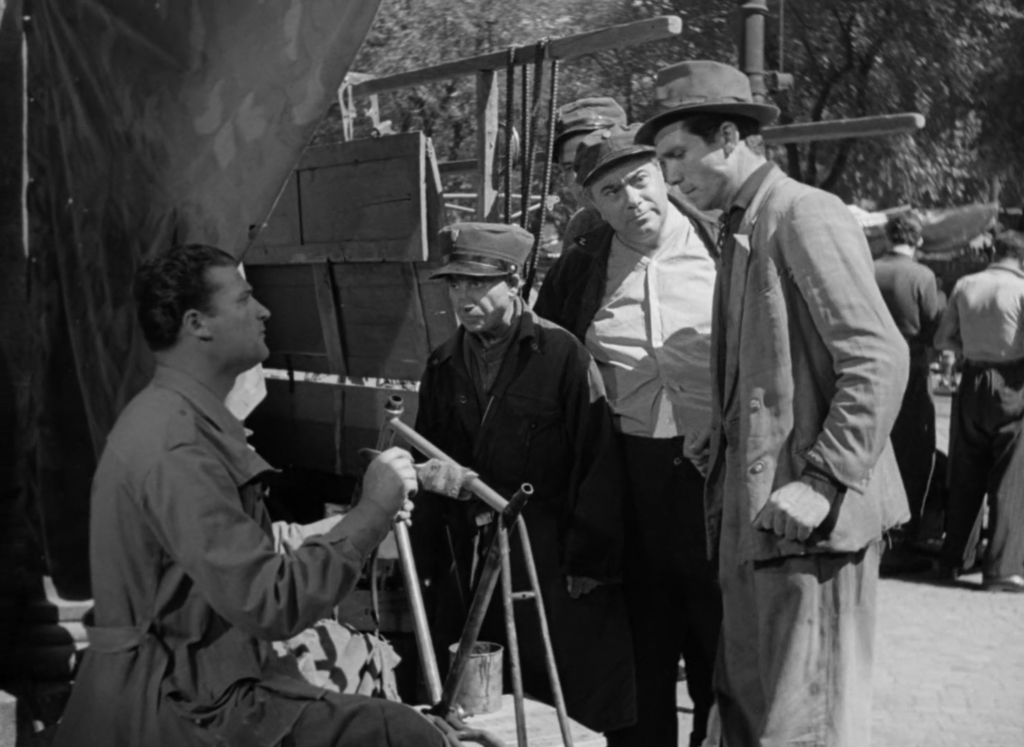
People from unfortunate backgrounds were in constant discontent with their lives. Continually facing backlash, they found themselves in worse situations than they were initially.
“My films are a struggle against the absence of human solidarity against the indifference of society towards suffering. They are in a word in favour of the poor and unhappy”
– Vittorio De Sica
As the directors meditated on the faith of the undocumented workers, they unraveled a powerful and deep exploration of human characters. The conditions of working-class people do not change. Even though their days aren’t different, they struggle each day while the injustice in their lives continues. For the creators, these films were about people with no power over their lives, and they sympathised with them.
THEMES
The roots of Neorealist films were a sincere call for better living conditions for the Italian working-class people. Filmmakers emphasised the issues of corruption, loss of innocence, and crime committed in desperation.
These films lacked a structure, the stories began arbitrarily and ended ambiguously. But all these films had themes in common, layered above one another. There are moments of multiplicity as each detail serves the character, plot, and environment. They are confessions of the complexity of the world.
MORALLY CORRUPTED OFFICIALS
Set in a dislocated society, the genre explores the depths of the failure of religious and government officials to help their citizens.
The cities were annihilated, the people were shattered, and the institutions were broken down. The failure of the official institutions, to be of service to people in need is a recurring theme in Italian Neorealist films.
When Ricci’s (The bicycle thieves) bike is stolen, his first instinct is to get official help. Once a complaint is filed, the official asks Ricci to look for the bicycle himself.
A stolen bicycle holds different values for people from different classes in society. A conversation between two officials shows how “it’s nothing serious, just a bicycle” for them, while for Ricci, it is his only source of income.
The police officials conclude their investigation by declaring Giuseppe’s (Obsession) death as an accident. The case was left untouched for months by the investigators; witnesses present themselves claiming to have seen the crime happen. With great pride, authority, and hypocrisy, the officials blame the witnesses for being the reason behind the delay in justice.
Vittorio De Sica’s Shoeshine is the most sincere depiction of the corrupt world of government officials and the powerlessness and helplessness of the lower social classes.
The children are arrested and kept in prison even with pending investigations. The prison guards are just as corrupt as their seniors, shamelessly stealing from imprisoned children.
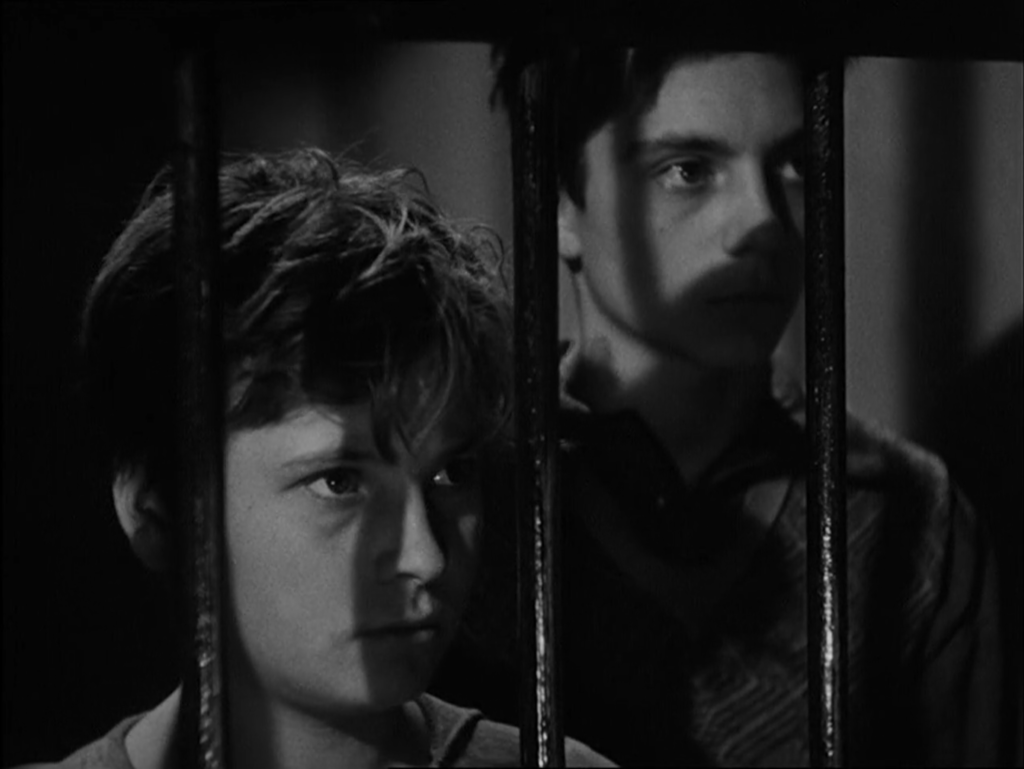
The film continues to underline the unsteady fascist system. When parents request the officials to speed up their children’s cases, the director shifts the blame to the rise in crime being the reason for the delay, instead of accepting their fault.
Italian neorealist films dived deep into examining the social problems of Italy.
Pasquale’s (Shoeshine) state-provided attorney, lacks interest in defending his client. His future is at risk, yet his lawyer leaves the decision at the clemency of the court without even defending him.
Unions such as churches and welfare organisations were falling as well. Religious beliefs were dying, Francesco (Rome Open City) does not believe in God but agrees to get married at a Church because it would be “better than a city hall full of fascists”.
The well-established church and Christians want to help the poor and cater to their needs but not without conditions. In The Bicycle Thieves, the poor and desperate are forced to listen and adhere to Christian beliefs in exchange for food and medicine. They were locked in the church until the prayers were over.
The members of the church (Paisan) have a rigid belief system. They are overwhelmed and prepared to sacrifice their meals to help their guest. On finding that one of their guests is Jewish, they rethink their offer to help and try to convert them into Christians. For them, people believing in any other religious system are “Lost Souls”.
These films explored the profound and serious circumstances of post-war Italy and the indifference of institutional arrangements to real miseries of human experiences.
LOST INNOCENCE
Many Neorealist directors included roles for children in their stories. Some preferred to cast them as leads, while others preferred them as side artists. Children represented in Neorealist films grew up during the second world war. Their upbringing happened in a disruptive and damaged society. Living in desperate conditions away from basic luxuries of life was the normal these children were used to.
In these films, children are a representation of lost innocence. They grew up with adult shortcomings, and their characters are mature for their age, have a cynical outlook on life, and live with a greater sense of survival to get by. They have experienced things that generally are experienced at later stages of life.
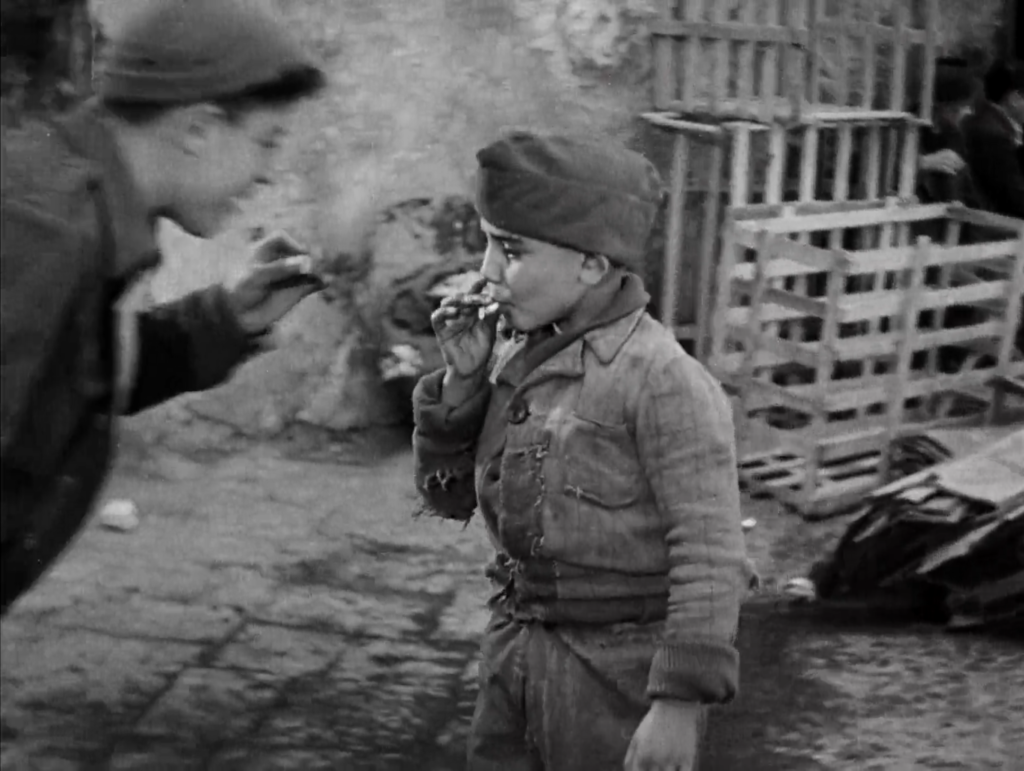
They portray maturity by taking up tasks and responsibilities like adults. Bruno (The Bicycle Thieves) communicates his maturity through his actions throughout the film. His day begins with getting up early in the morning without any fuss and going to work.
These children lacked responsible role models in their lives. Parents remain unbothered and fail even to visit their children at the juvenile center. Giuseppe’s (Shoeshine) parents let him be imprisoned to protect their other son.
The children in Italy had gone through moving and psychologically traumatic experiences during the war. Romoletto (Rome Open City), a boy, leader of a Children Union incites his friends to plan and execute a riot. There present a sense of conviction and determination in them.
Their plans aren’t concrete and have holes, but their intentions do not lack vigour. With the brilliance of storytelling, they are brought back to reality in the very next scene. One moment they are dominant and powerful, and in the following scene they are beaten by their parents for being a part of the riot.
Since adults had a life before the war and destruction, they successfully differentiated between the basics of right and wrong.
Filmmakers effortlessly reverse roles, and children become parents to their parents. Bruno (The Bicycle Thieves) saves his father twice from being beaten up by the crowd. He discovers some unpleasant and deeply flawed sides of his father in a day as Ricci gives into desperation and attempts to steal.
Children are found smoking, scheming, and stealing. Director Roberto Rossellini’s Paisan sets the tone for the presence of all these unruly traits in children.
The social turmoil they are surrounded by made them face the bitterness of life at an early age. Giuseppe and Pasquale’s (Shoeshine) strong sense of brotherhood and trust is shattered as they lose control of their lives to the fascist institutions.
Children in these films make statements such as “Money has no value these days” or “This is no time for catechism”, on being asked why they do not attend church. Boys in Rome Open City conclude not to involve girls in the riot because “they mean trouble”.
Their sense of judgment comes from the harsh reality they are living in. With no optimism for the future, children who grew up during the war had a gloomy worldview. They lived an unorganised and unhappy life surrounded by injustice stripping them away of their innocence.
CRIME COMMITTED IN DESPERATION
Anxiety and desperation were endemic to post-war Italy. With the absence of basic necessities and employment opportunities, the crime rate was on the rise.
There is a sense of reasoning and understanding between the viewers and the characters when a crime is committed out of desperation. Post-war the Italians lived in anger, poverty, and deprivation and the filmmakers etched their miserable lives with storytelling.
Lack of work despairs them and resort to selling or pawning their clothes, and sheets and even committing crimes.
While lack of work and an attempt to escape poverty and exploitation led Antoni (The Earth Trembles) to give up his house, fear of losing work made Ricci (The Bicycle Thieves) steal a bicycle. Both audience and Ricci find themselves in a moral dilemma about whether or not to steal the bike.
They share the anxiety with Ricci as he weighs his options, Di Sica had throughout the film laid the groundwork to establish the importance of the bicycle.
Tormented and anguished, children or adults, stealing or scheming was their last resort for survival. As later revealed in Paisan, the child’s act of stealing the soldier’s shoes was an act of desperation and a means to survival.
Crimes weren’t limited to pickpocketing or scheming alone. Filmmakers introduced murder plots as well, both planned and accidental, instigating criticism.
While watching Director Vittorio De Sica’s Obsession, Vittorio Mussolini cried seeing the controversial and bleak worldview of Italy. For him, that wasn’t what Italy was like or was supposed to be like.
Films made in liberated Italy explored themes that were considered moral failings at the time. The creators showed Italy as a broken society and introduced the ideas of infidelity, unemployment, stealing, scheming, murders, poverty, hunger, and starvation.
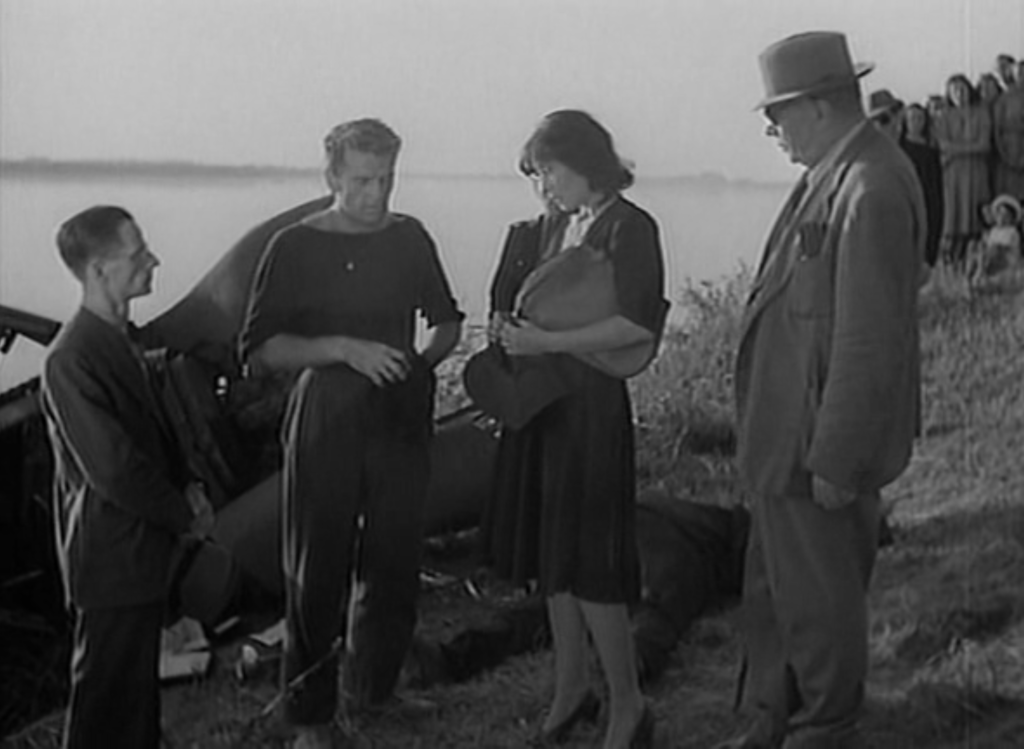
Obsession explores infidelity which eventually leads to murder. “In terms of both content and style, the film came as a shock to many,” Visconti said in a 1969 interview. “At that moment nobody could address such themes, even if they wanted to.”
In Federico Fellini’s La Strada, Zampanò accidentally kills his nemesis, and in Vittorio De Sica’s Shoeshine Pasquale accidentally kills his friend Giuseppe.
The heroes in Italian Neorealist films are morally corrupt, they lack the general sense of greatness which is expected from them. They are just as dishonourable and unethical as we are. These questionable and distasteful traits were part of the social and economic anxiety that the Italians shared during and post World War II, an emotion left undiscovered and untouched in fascist films. These films ended the romanticism of Italy.
SUB-THEMES
SOCIAL HIERARCHY
The class hierarchy had a substantial presence in Italy. Neorealist films vignette around the widespread influence of the same. There is a social ladder lingering even amongst the marginalized community.
There are both bold and subtle hints in neorealist films that establish the dominance of one over the other. In The Earth Trembles, the dining table at the wholesaler’s house is spread with a wide variety of food. They have fruits, meat, bread, and even proper cutlery, while the fishermen lacked variety and had ration enough for a day or two.
Lower social orders getting exploited by higher classes was fairly common. The underlying theme of class discrimination within the marginalized society establishes the absence of community and solidarity among people.
In The Earth Trembles, the Valastros’ living conditions keep declining as the story progresses. In months they lose their house, boat, and even jobs. Having lost everything, there is a visible shift in neighbors’ attitudes toward them.
Ricci (The Bicycle thieves) has a moral conundrum. Having found the thief, whose condition is much more miserable than his. In Shoeshine, Guiseppe gets a shorter sentence being able to afford a lawyer compared to Pasquale who has a state-appointed attorney.
The idea of a social hierarchy was deeply embedded in the people.
COMICAL RELIEF
With the desolate and melancholic environment of Neorealist films, filmmakers often included scenes for comical relief. These scenes, however, little carried their uniqueness and weight. The ambiguity of these scenes didn’t help to further the plot, they were the beginning and the end.
Comical relief is devised to add some flavor to the otherwise dark and bleak Italy. However detached from the plot, they are not meaningless or hollow acts to fill time.
When Don Pietro (Rome Open City) turns around sculptures of naked man and woman to protect the sculpture of Jesus’ eyes from nakedness, it depicts the seriousness of his beliefs.
The deviation into comedy, like adults blowing raspberries as a response to serious arguments in The Earth Trembles, and Bruno (The Bicycle Thieves) trying to pee during a downpour while chasing the probable thief, emphasises the obscurity of it all.
These antics juxtapose the depressing state and help the characters seem more human and relatable as they find themselves stuck in the most random situations. Whimsical humor helps diverge from the pressing reality.
THE END OF THE MOVEMENT
Despite an extensive and global impact on the cinema, the Neorealism movement dissolved within a decade.
Italy was developing and the living conditions were improving during the years that followed. The lives of the general population had significant upgrades, had more job opportunities and people were recovering from the traumas of the war.
Since the Neorealist films carried a bleak sense of existence and livelihood, they had a fallout with critics, and their audience grew smaller with time. The public shifted to films that were light-hearted and didn’t have ambiguous or unsatisfactory endings.
The movement had a gradual end on its own. The creators eventually transitioned. The neorealist filmmakers never abandoned the Neorealist theories, they devoted themselves to more mainstream fare. The movement ceased on its own gradually, inspiring filmmakers who went on to become prominent figures in the film industry.
This is so well researched 🫡.
Visconti was AD to Renoir, Whaat? Fellini was AD to Rossellini, Whaat? Never knew that.
Speechless. Take a bow gurll. What an amazing piece. Of all the boasting I do about having watched world cinema and knowing about the legends behind it, I didn’t know loads of shit I got to read in this article. Like Mussolini established a film school or the first film studio, being the asshole he was or the Telefoni Bianchi films which I can’t help but connect to the current state of Indian journalism and bureaucracy.
Also, even I knew that they used to pick non actors I never felt like they were not real actors. That’s why I always say that cinema is Director’s medium as opposed to theater where it’s mostly about actors. A good director can pick Sharukh Khan and make Swades, whereas give him to Rohit Shetty or Farah Khan and you’d get Dilwale or Happy New Year.
I was happy to read that you noticed that ‘the ending of most of these films lacks a sense of hope or optimism that the lives of these characters can change for the better’ as opposed to most of the Iranian films, specially by Farhadi or Makhmalbaf or Kiarostami.
There’s only one point where I find myself thinking differently and it is where you say that the movement ended gradually in a decade. For me the Italian Neo Realism just moved out of Italy and was still active in the face of French New Wave and New German Cinema and Japanese New wave and most importantly in Indian Parallel Cinema.
In true sense of the word, I consider this piece a ‘Pind Daan’ to those great visionary filmmakers.
KUDOS, CONSIDER MY MIND BLOWN.